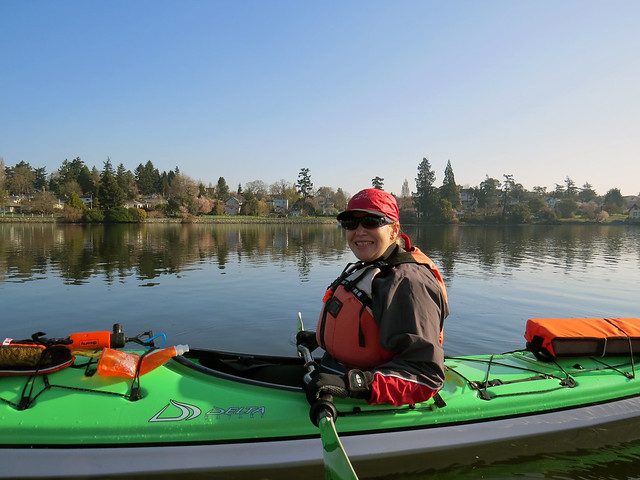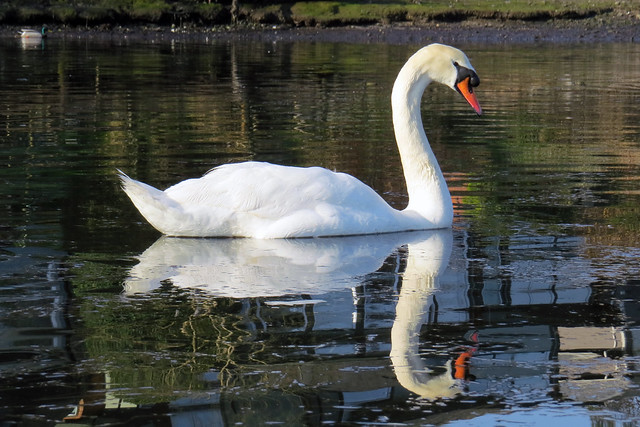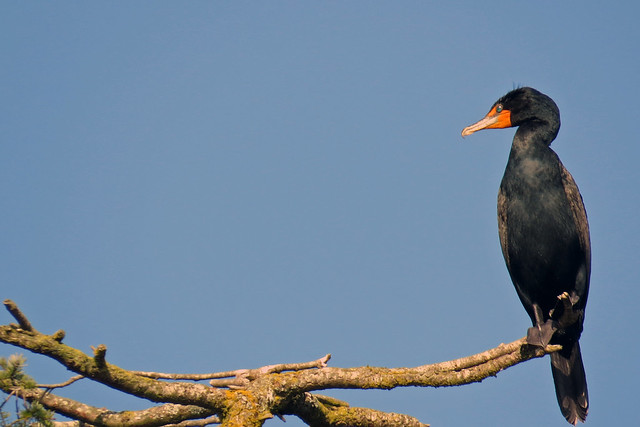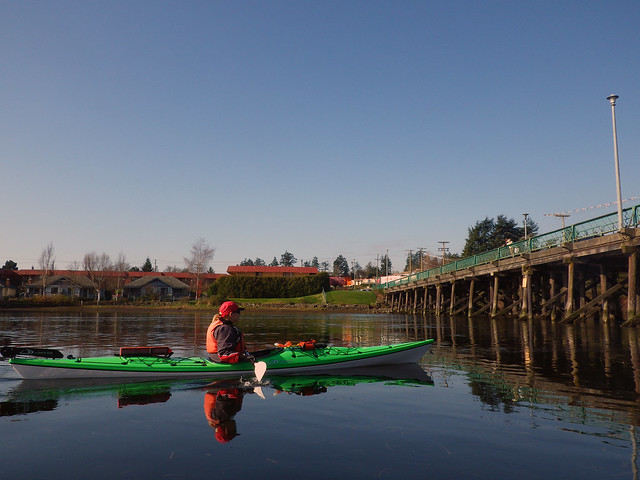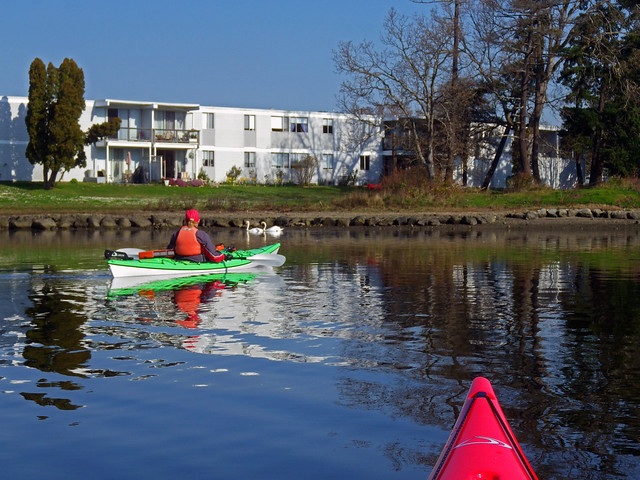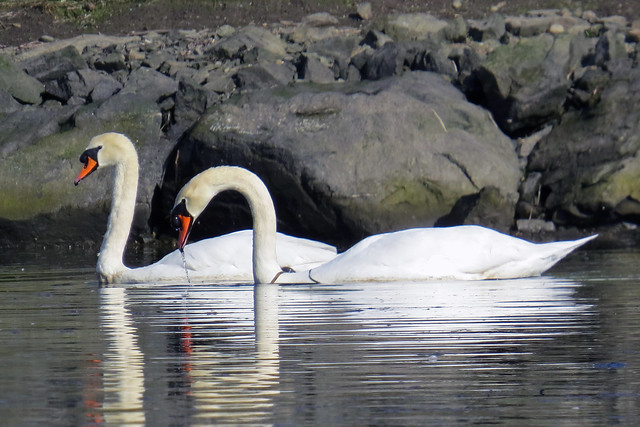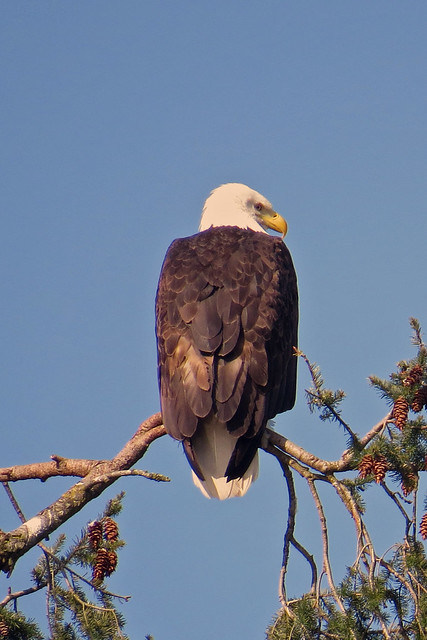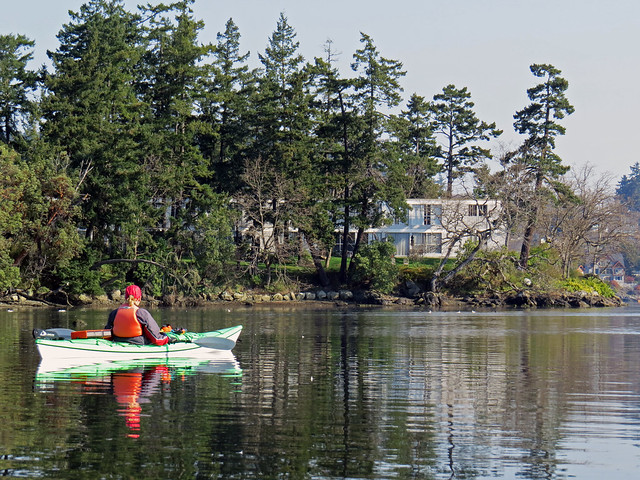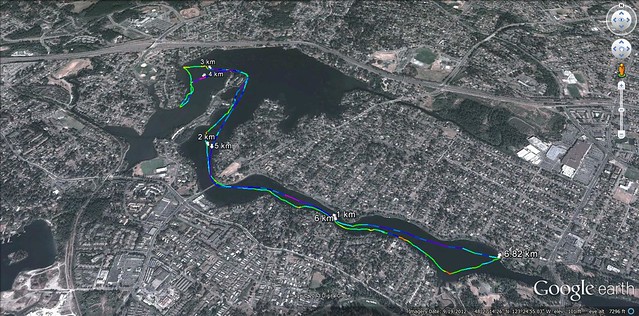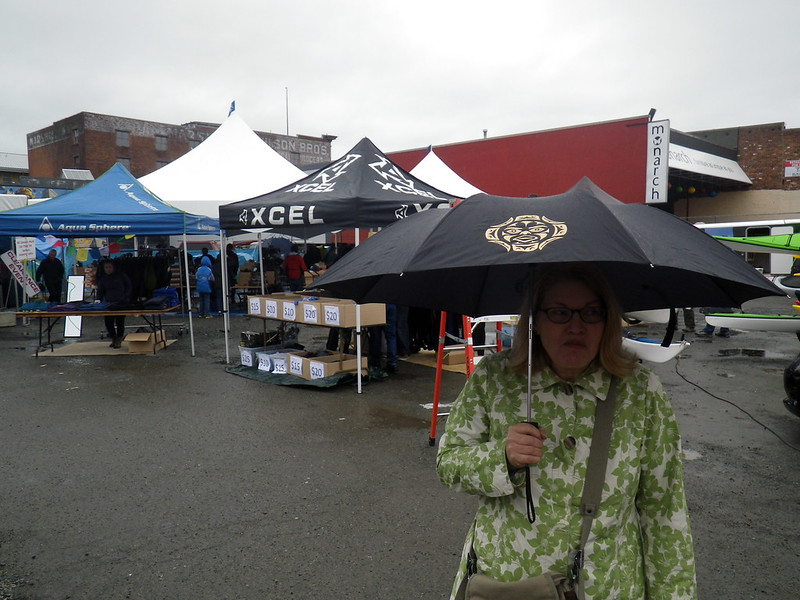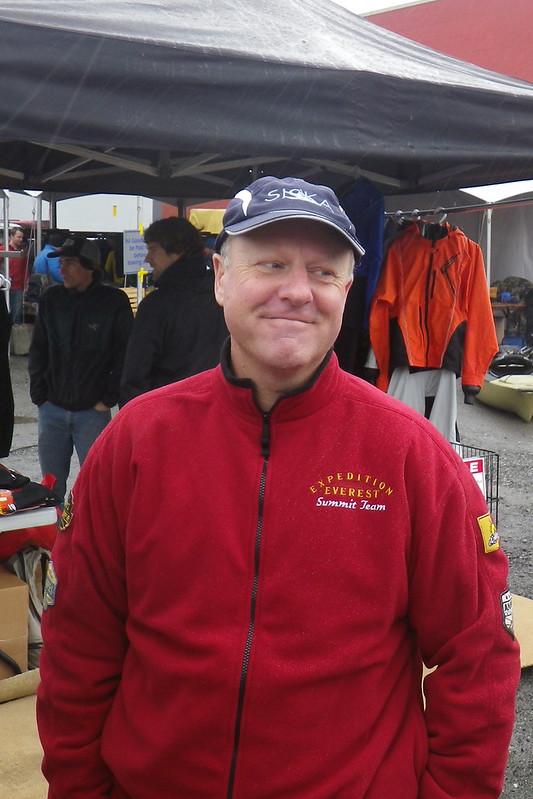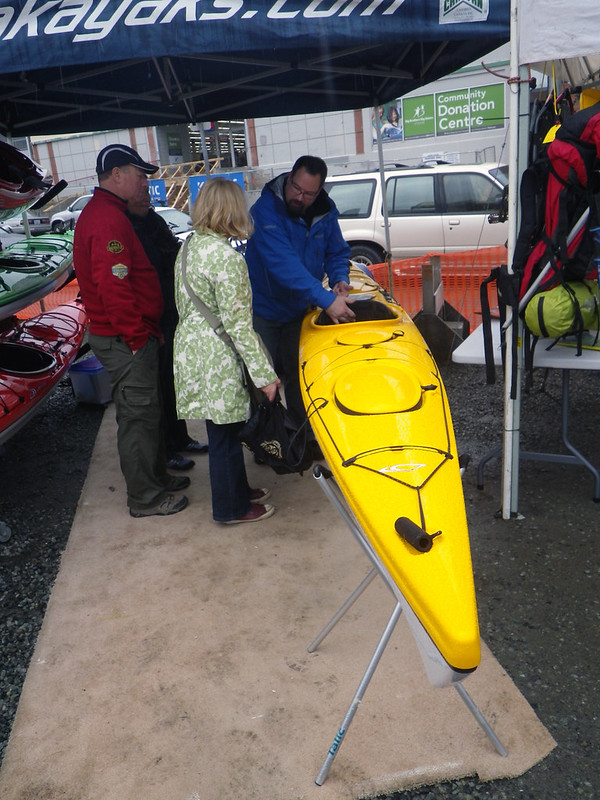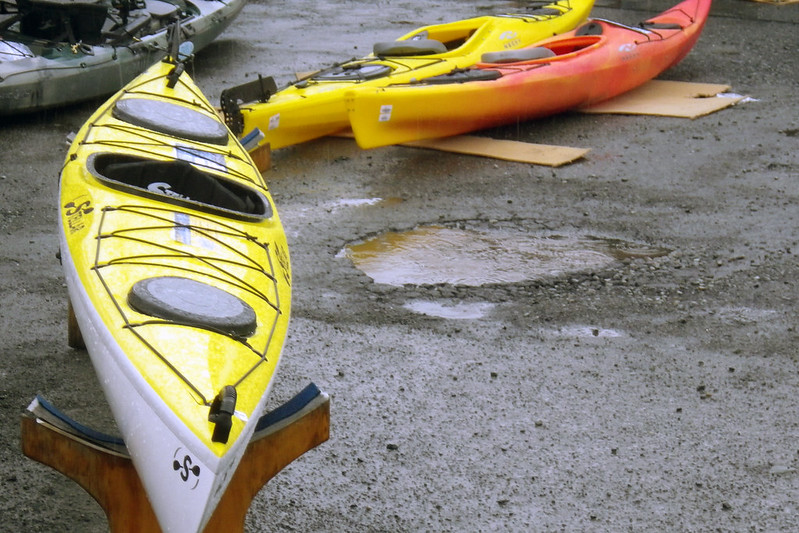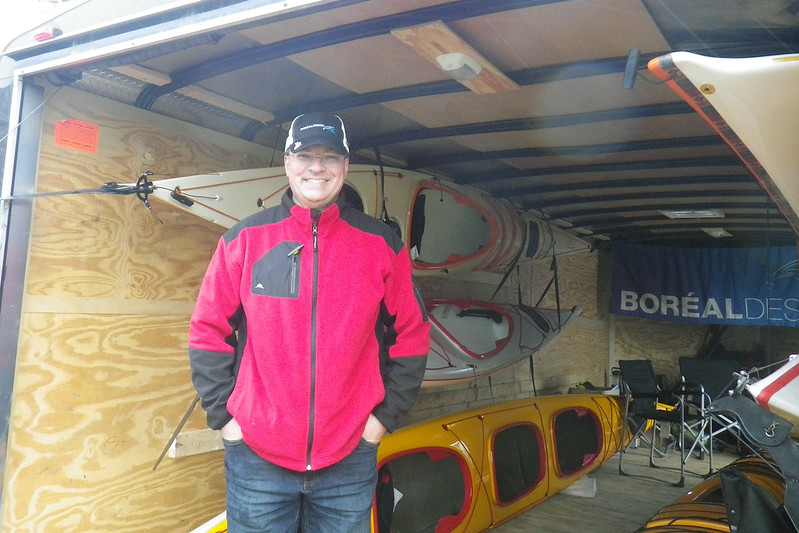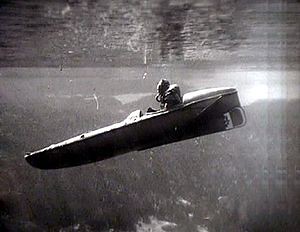Plus, a beautiful fogbank blew in while I was paddling on Good Friday. As I came back to the shore at Cadboro Bay's Gyro Park beach, two people walking came up to me. Pam and Caroline both enthused about how they watched me approaching the shore, bringing the mists behind me.
Then, of course, they had to enthuse about my little inflatable kayak... several minutes were spent here praising the merits of kayaks in general, and this model or its big brothers in particular. I never even got a chance to tell them what I'd seen on this paddle outing -- three invertebrates that I rarely see, and one that along this shore isn't usually nearly this big!
Invertebrates sounds so cool... I nearly named this post after them, but thought better of it. Four sluggy creepy beasts sounds soooooo less technical and interesting than four invertebrates. But there you have it. Plain language doesn't always have the zip and pizzazz of highfaluting precise language. So here goes for descriptions of the three sluggy and one prickly friends I saw while drifting on the water. (And for those who don't speak highfalutin', invertebrate means "animal with no backbone" which includes a whole range of kinds of animal from bugs to slugs and sea stars.)
The first invertebrate I saw was a sea cucumber, which had stuffed itself between a couple of rocks on Evans Rock, right about where I saw the gray whale two summers ago. We've seen only one sea cucumber before while out paddling, and that was about half a mile away from Evans Rock in the Chain Islets. During one low tide back in 2007, a group of us paddled to the Chains and Bernie found a large orange sea cucumber, grazing on kelp, which John photographed. The little sea cucumber I saw this time was similarly orange, but short and very bright in colour, with a flare of gills showing like a frilly flower.
 |
| photo from Wikipedia |
The second invertebrate -- and the prickly one -- was a sea star. Most starfish we see here along the shore of Cadboro Bay are the kind that our fellow paddler Alison Sinclair identified as ochre stars, or Pisaster ochraeous, bright orange or purple, up to the size of a big man's hand. Once a year or two a giant sunstar, pink or pale orange and about two feet across, can be seen creeping along a rock shelf on the bottom near Flower Island. This time what I saw as I paddled around Flower Island was a purple sea star that was over a foot across. Wow! It was clinging to a rock exposed at low tide, unconcerned when I came by and petted its rough back.
 |
| yup, another photo from Wiki |
The fourth invertebrate was actually one of several sea anemones ... I lost count at five or six. They were ten or more feet down. These were the big white anemones with fronds like heads of cauliflower, and each anemone was about a foot long, from its base to its open fronds. When I do see an anemone like this in the bay, it's six or eight feet down even at low tide, and usually alone. It was great to see the group of anemones about two feet apart, with their fronds open and waving.
So, even though it was a pleasant cool day, with coots and hooded mergansers and a merganser, a cormorant, a pair of oystercatchers and a pair of soaring eagles, the best part for me was that there was plenty to see going by under my kayak as well as flying past. It was a surprise to hear the foghorn grunting, and see the fogbank coming my way from the Chathams. It's so good to think about more living things in the bay than we've ever seen before. It looks like the waters of the bay are more suitable for more invertebrates now than even five years ago! Perhaps the water is cleaner, or perhaps the river otters are eating enough sea urchins that more kelp is growing to support the web of sea life.


